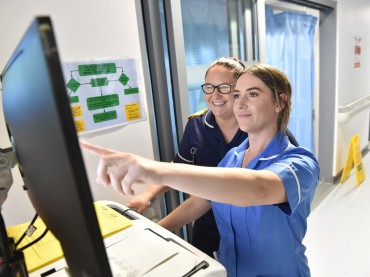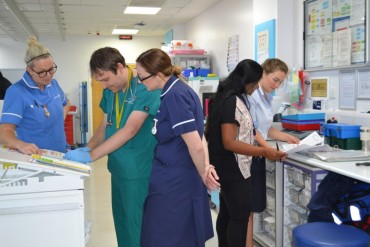You are been discharged from hospital with an ambulatory chest drain. This drains away air and fluid in the pleural space (small gap between your lung and the inside of your ribcage) following your surgery.
The ambulatory bag connected to your chest tube is used to help you become more mobile and to return to performing your everyday activities whilst continuing your recovery at home.
The air and fluid from your chest will flow through the one way flutter valve that prevents air going back into your chest.
The ambulatory bag comes with a belt which is attached and adjusted by threading the belt through the valve protector.
If the bags becomes full or heavy then it can be emptied using the tap. Be sure to close the tap again after emptying.
The drain is attached to your skin with a simple stitch. This will be covered by a dry dressing. A district nurse referral will be made to visit you change this dressing twice a week.
A chest drain can sometimes be sore and uncomfortable. You will be provided painkillers to take home and we will encourage you to continue them whilst the drain remains in place.
After leaving hospital you can slowly get back to your normal activities, gradually doing more each day. Walking is the best exercise, so set yourself short targets which you can gradually improve on. You will find it easier at home to go for short walks, for example in the garden or the local shops.
Continue to use your Spirometer, practicing deep breathing exercise.
If you usually drive a vehicle, you should avoid doing so whilst you continue on strong prescription painkillers such as gabapentin, codeine and morphine liquid (oramorph) as these can affect your concentration.
Prior to discharge You will receive an appointment with the thoracic nurse specialists to arrange a follow up review for admission for drain removal.



